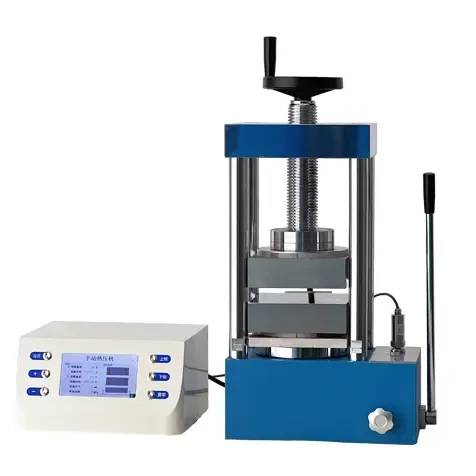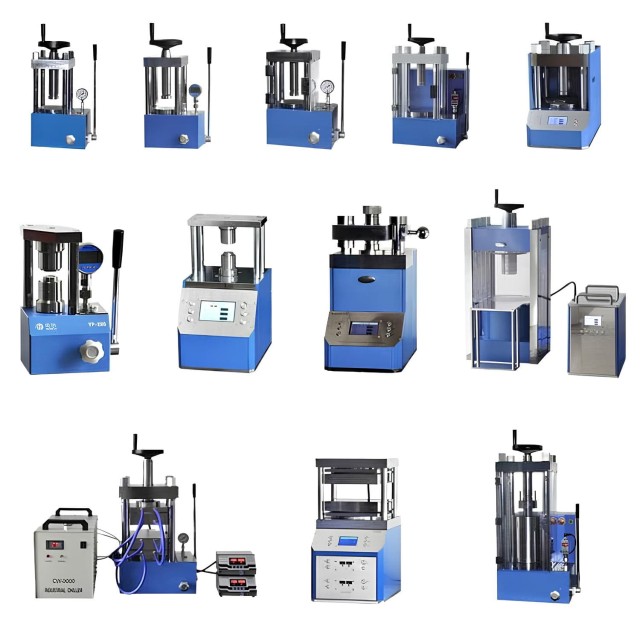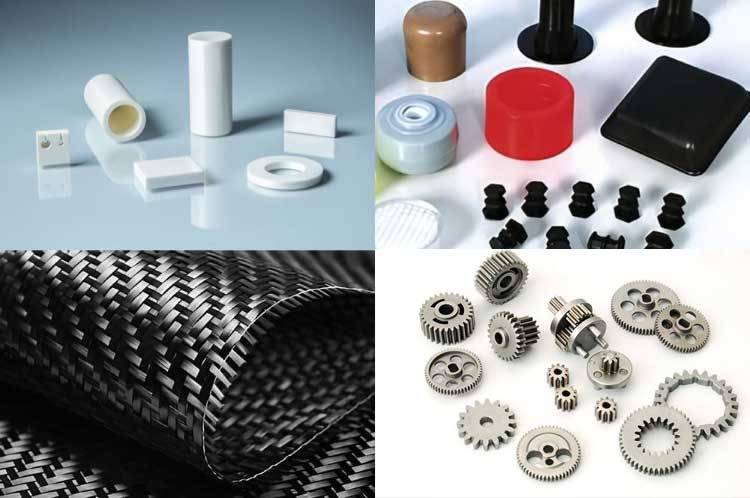Learn about heat press machines
Definition and functions of heat press
A heat press is a device that uses heat and pressure to join or mold materials into a desired shape. It involves heating two parts with solder so that it melts and flows, creating a permanent connection between the parts and the solder. This kind of electromechanical connection is essential in various industries, including the automotive industry and die and punch applications.
The role of heat transfer in operation
Heat transfer plays a vital role in the operation of a heat press. According to the first law of thermodynamics, heat transfer changes the internal energy of both systems involved. The machine's heating speed is adjustable, allowing for different products and desired temperature levels. Titanium indenter ensures uniform temperature, fast heating and long service life. The temperature is controllable and precise, with a digital pressure gauge that allows for preset pressure ranges.
Design features for precision and durability
Heat presses are designed with features that prioritize precision and durability. The machine's hot plate uses a solid longitudinally drilled steel plate to ensure good accuracy and durability of the pressing plate. The hot pressing system heats up quickly and the pressure adjustment is easy to operate. In addition, the heating system and thermal conduction system adopt a segmented design, with low heat consumption and uniform heat conduction. These design features help improve the overall performance and service life of the machine.

Powered by oil pressure and compressed air
The heat press is controlled by an advanced electronic system that allows precise adjustment and automation of various processes. These machines are primarily powered by oil pressure and compressed air. Sufficient air pressure and volume must be ensured for the machine to operate properly. The vacuum level can be adjusted for optimal adsorption, and the product can be adjusted to achieve the desired effect.
The structure and composition of the rack
The frame of the hot press is made of steel plates and has a reasonable structure. The frame consists of the entire machining process, ensuring durability and stability during operation. This sturdy frame provides the necessary support for the table and other parts of the heat press.
Periodic use of both workbenches
Heat presses usually have two worktables that can be used repeatedly. This can improve processing efficiency and productivity. Using two workstations ensures that one workstation can be loaded and prepared while the other is in use, reducing downtime and maximizing machine utilization.
The advanced electronic controls in the heat press offer multiple benefits and features, making them efficient and user-friendly.
- The control panel is automated and easy to operate, saving labor costs and achieving smooth operation with minimal effort.
- The use of well-known electronic components ensures the stability and durability of the machine.
- Hydraulic balancing device ensures stable and fast movement of the machine.
- The heating system, including heating tubes, quickly conducts heat to each floor, resulting in an even temperature distribution.
- The hot press machine has an advanced automatic system that can automatically apply pressure, maintain pressure and compensate for pressure. This ensures that the board is under even pressure throughout.
- The machine's heating plate is constructed from solid longitudinally drilled steel plate, providing precision and durability. The hot pressing system heats up quickly and the pressure is easy to adjust. The heating and thermal conduction system adopts segmented design, with low heat consumption and uniform heat conduction.
Heat presses with advanced electronic controls are suitable not only for industrial applications but also for laboratory sample manipulation activities. They can be used for heat embossing, laminating and molten polymers of films.
KINTEK's fully automatic laboratory presses are examples of heat presses with advanced electronic controls. It features a stylish design with an LED touch screen interface for easy operation. The hydraulic system generates precise and consistent force for efficient sample preparation.
In summary, heat presses with advanced electronic controls provide precise temperature control, automation, and durability. They are powered by oil pressure and compressed air, have a sturdy frame construction, and allow for cyclic use of the workbench. These machines are versatile and can be used in a variety of industries, providing efficient and reliable hot pressing operations.
Main features of heat press
Structural and functional features
- Heat press machines for swing doors are equipped with advanced features for smart and efficient door pressing solutions.
- The plates in these machines are designed to exert optimal pressure, resulting in high-quality products.
- Hydraulic heat presses provide temperature selection, technical control and precise processing for product quality.
- They can use various heating methods, such as steam, electricity and heating oil, to achieve the desired heat press effect.

Accuracy and efficiency features
- The control panel of the heat press is automated, easy to operate and saves labor costs.
- Electronic components are known to provide stability and durability.
- Hydraulic balancing device ensures smooth and fast movement of the machine.
- The heating system with heating tubes quickly conducts heat to each floor.
- The heat press maintains consistent pressure throughout the entire operating cycle.
- The automatic pressure feature allows easy control and operation.
- They are able to withstand high working pressure and long-term service, saving money on electricity bills.
- These machines are designed for maximum production value, making them ideal for companies looking to increase productivity.
Security and customization features
- The heat press has a two-hand start button, emergency rise switch, safety hand grille and three-sided sealed safety door to ensure safety.
- They can be customized to meet specific production process requirements.
- The machine can be equipped with top or side cylinders and the electronic control system can be configured accordingly.
- The heat press accepts non-standard customization, providing flexibility for different needs.
envirnmental factor
- The hot press has low heat consumption and uniform heat conduction, which reduces production costs and energy consumption.
- They provide precise temperature control through pulse heating technology and real-time temperature profile display.
- The machine has multiple working modes and multiple program pre-storage options.
- Heat presses are used in a variety of industries, including woodworking and manufacturing.
Overall, heat presses for swing doors have structural and functional features, precision and efficiency features, safety and customization features, and environmental considerations. These machines provide businesses with reliable performance, high-quality products and increased productivity.
How the heat press works
Hot presses are processing equipment that operate under positive and negative pressure. Heat presses work by using pulsed heating pressure to create a low-resistance surface on the welding head. This allows current to flow through the part with the least resistance, quickly heating the welding tip.
In addition to positive pressure, special glue is used in combination with negative pressure. This combination is particularly effective for processing PVC series products as it provides superior linear positioning and adhesion compared to negative pressure equipment. The higher pressure and lower temperature of the hot pressing process also make the film pressing time shorter, reducing the deformation of the workpiece during processing.

Features and advantages of hot pressing process
The hot pressing process has several features and advantages that make it the first choice in a variety of industries:
Hydraulic principle: The hot press adopts the hydraulic principle to ensure highly balanced pressure application. The pressure fluctuation range can be set and controlled, and the pressure loss can be replenished at any time.
Automatic pressurization: The advanced automatic system in the hot press machine can realize automatic pressurization, pressure maintenance and pressure compensation. This ensures that the board is under even pressure throughout.
SOLID STEEL HEATING PLATE: The heat press's hot plate is made of solid longitudinally drilled steel plate for exceptional precision and durability. Its heating system adopts a segmented design, with low heat consumption and uniform heat conduction.
Automated process
The heat press is equipped with automated processes including table feeding, heating, vacuuming, forming, demoulding and table lowering. These actions are powered by oil pressure and compressed air. It is important to ensure adequate air pressure and air volume for optimal performance.
The frame of the heat press is composed of steel plates, which is strong and structurally sound. The two workbenches can be used together or separately, providing flexibility for machining operations.
With its efficient working principle and automated process, the heat press delivers precise and reliable results, ensuring the quality and performance of the final product.
Classification of hot press machines
Heat presses are widely used in various industries due to their ability to provide reliable performance and efficient production. These machines can be classified based on their design, functionality and the media used. Let’s take a closer look at the different classifications of heat press machines.
Various types based on design and functionality
- There are various types of heat press machines based on their design and functionality. Some common types include:
- Thermostatic Heat Press: This type of heat press uses a thermostatic control system to maintain a constant temperature during the pressing process.
- Pulse Heat Press: Pulse heat press utilizes pulse heating technology to quickly heat the welding surface, ensuring efficient and precise results.
- Dual-Station Heat Press: Dual-station heat presses have two workstations that can be used individually or in recycling mode, thereby increasing productivity.
- Double-head pulse heat press: The double-head pulse heat press has two welding heads, doubling the efficiency and output.
- Benchtop Heat Press: Benchtop heat presses are compact and portable, making them ideal for small businesses or limited workspace.
- Swing-type heat press: The swing-type heat press adopts a swing-type design, which allows easy access to the work surface and simplifies the operation process.
Classification based on media used
Heat presses can also be classified based on the media they use for the pressing process. Some common classifications include:
-
Soldering: The heat press using tin solder is suitable for connecting FPC (flexible circuit board), HSC (zebra paper) and TAB to LCD and PCB.
-
ACF (anisotropic conductive tape): ACF hot press machines are used for the connection of FPC and LCD panels, offering efficient and reliable bonding.
-
ACP (anisotropic conductive glue): ACP hot press machines are widely used in the electronics industry for the bonding of LCD panels and other electronic components.
-
TBF (hot melt adhesive film): TBF hot press machines utilize hot melt adhesive film for various bonding applications, providing strong and durable connections.

The use of pressure and special glue in processing PVC series
The hot press plays a vital role in processing PVC series materials. By adding positive pressure to negative pressure and using special glue, these machines ensure excellent bonding strength and precise positioning. The high pressure, low temperature and short film pressure time of the hot press can reduce the deformation of the workpiece and ensure excellent quality and performance.
In summary, heat presses are versatile and efficient tools used in various industries due to their reliable performance and high productivity. Understanding the different classifications of heat presses can help businesses choose a machine that suits their specific needs, ensuring optimal results and cost-effectiveness.
Hot press technical requirements
Heat presses are essential for a variety of industries that require the use of heat and pressure to bond, cure, or shape materials. These machines have specific technical requirements to ensure their efficiency and effectiveness. In this article, we will discuss the key technical requirements of a heat press.
Pressure application using hydraulic principles
One of the key technical requirements of a hot press is the use of hydraulic principles for pressure application. Hydraulics ensure high pressure and balanced pressure application. The pressure fluctuation range of the hot press should be set and controlled, and the pressure loss should be replenished at any time.
Automatic pressurization and replenishment function
The hot press should have an advanced automatic system that can realize automatic pressurization, pressure maintenance and pressure compensation. This ensures that the heating plate is subject to even pressure from the beginning to the end of the process. The machine should have features that require hands-free operation and allow pressure to be controlled.
Materials selected for durability and high pressure resistance
The heat press should be built using materials that ensure durability and withstand high pressures. The machine should be made of raw steel to prevent deformation under high pressure. The heating plate is a critical component of the machine and should be constructed from solid longitudinally drilled steel plate to provide precision and durability.
Hydraulic core system components and their origins
The hydraulic core system of a hot press should be composed of high-quality components. Heavy-duty hydraulic cylinders and hydraulic valve groups should be manufactured by well-known brands such as the German Rexroth brand. The hydraulic pump station should also be of high quality and can be sourced from well-known German brands. The use of high-quality components ensures machine longevity and reliability.
Advanced automatic system to ensure pressure uniformity
To achieve the best results, the heat press should have an advanced automation system to ensure pressure uniformity. The system should include automatic boosting, pressure maintaining and pressure supplementing functions. These features ensure that the sheet is subjected to even pressure throughout the entire process, resulting in high-quality bonded, cured or formed materials.
Heating plates designed for precision and durability
The hot plate is a key component of the heat press. It should be designed to provide precision and durability. The heating plate should be made of solid longitudinally drilled steel plate to allow for rapid heating and easy adjustment of pressure. In addition, the heating system and thermal conduction system should be designed in sections to ensure low heat consumption and uniform heat conduction.
In summary, heat presses have specific technical requirements to ensure their efficiency and effectiveness. These requirements include the use of hydraulic principles to apply pressure, automatic boosting and replenishment functions, material selection for durability and high pressure resistance, high-quality hydraulic core system components, advanced automatic systems for pressure uniformity, and design for accuracy and durability. heating plate. By meeting these requirements, heat presses can provide excellent results in bonding, curing or shaping materials.
About laboratory heat press

A laboratory heat press is a device used to heat and compress materials to make a variety of samples and products. They are commonly used in research and development efforts in materials science, chemistry, engineering and other fields. Here are some examples of things you can make with a lab heat press:
Pressed ceramic samples: The laboratory hot press can be used to press ceramic powder and produce ceramic samples such as electronic ceramics and structural ceramics.
Preparing composite materials: By layering or mixing different materials together, a laboratory heat press can prepare composite materials, such as fiber-reinforced composites.
Preparation of battery materials: In battery research, laboratory hot presses can be used to prepare positive electrode materials, negative electrode materials and electrolyte membranes.
Synthesize high-temperature and high-pressure materials: The hot press can synthesize new materials such as diamond and boron nitride under high-temperature and high-pressure environments.
Fabricating Ceramic Thermal Barrier Coatings: Ceramic thermal barrier coatings for aerospace and aerodynamic engines can be prepared using a laboratory heat press.
Preparation of powder metallurgy products: Laboratory hot presses can be used to prepare metal powder metallurgy products such as parts and tools.
Preparation of optical components: Some optical components, such as infrared windows, lenses, and prisms, can be processed using a laboratory heat press.
Preparation of magnetic materials: Laboratory hot presses can be used to prepare magnetic materials such as permanent magnets and magnetic recording media.
These are just a few examples of laboratory thermocompression applications. Their capabilities depend on their design and performance, as well as the materials and processes used. The main function of a hot press is to process materials into required shapes and properties under high temperature and high pressure, so it is widely used in materials research and manufacturing.
Related Products
- 24T 30T 60T Heated Hydraulic Press Machine with Heated Plates for Laboratory Hot Press
- Manual Lab Heat Press
- Heated Hydraulic Press Machine with Heated Plates for Vacuum Box Laboratory Hot Press
- Vacuum Hot Press Furnace Machine Heated Vacuum Press
- Heated Hydraulic Press Machine with Heated Plates for Vacuum Box Laboratory Hot Press
















